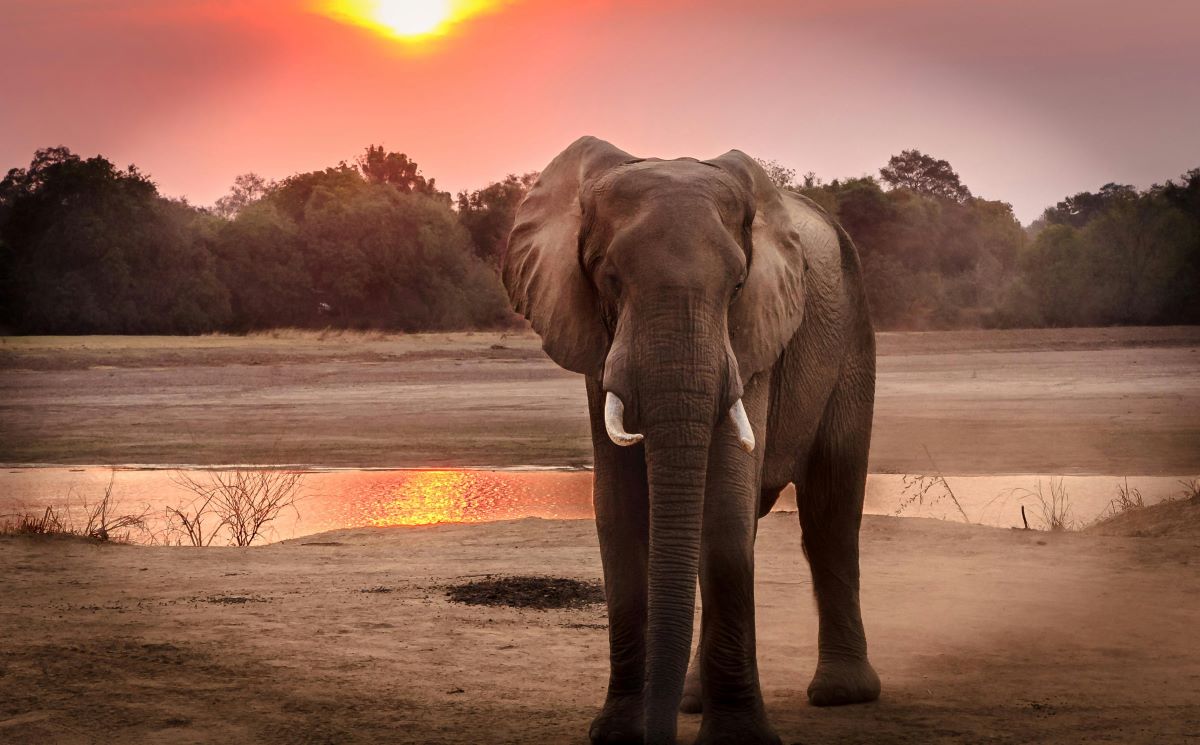Elephant hunting in South Africa reveals an extraordinary blend of adventure, tradition, and the exhilaration of pursuit when hunting this member of the Big 5 and Dangerous 7. This blog explores the diverse facets of elephant hunting, providing valuable tips and celebrating the majestic dangerous game hunting trophies that make this pursuit so compelling.
In South Africa, elephant hunting safari for conservation purposes is typically managed through carefully regulated programs to maintain ecological balance and mitigate human-wildlife conflict. These programs often occur in private game reserves and conservancies, where populations are monitored and controlled to ensure sustainability
[DYNAMIC-BLOGTABLEOFCONTENT]
Areas for Elephant Hunting in South Africa and their Challenges
Key Takeaways
- Elephants are extremely clever mammals that are found in Africa.
- There are two main species of African elephant, namely the bush or savanna elephant, along with the forest elephant.
- Elephants can be hunted throughout South Africa, provided you have the necessary permits and adhere to the necessary regulations.
- Be sure to use a high caliber rifle to ensure a swift and humane kill when elephant hunting.
- Various techniques are utilized to track and hunt elephants in Africa.
- Elephants are still targeted for their ivory horns and many thousands annually fall victim to poachers.
Greater Kruger Area
- The Greater Kruger Area includes several exclusive game reserves adjacent to Kruger National Park, such as Sabi Sand Game Reserve, Timbavati Game Reserve, and Manyeleti Game Reserve.
- Managed game hunting safaris play a critical role in maintaining balanced elephant populations, ensuring they do not exceed sustainable levels that could lead to habitat degradation and conflicts with local communities.
- This region boasts a diverse range of landscapes, from expansive savannahs to dense bushveld typical of the Lowveld area. It is celebrated for its rich biodiversity and iconic wildlife, making it a challenging yet rewarding environment for hunters. Navigating these terrains requires physical endurance, as hunters often spend extended periods tracking and moving through rugged landscapes.
- The Greater Kruger Area supports a dense wildlife population, including elephants, alongside other large predators and herbivores. This diversity complicates hunting activities, demanding constant awareness of the interactions between varied species and their habitats.
- Hunting in this area goes beyond the pursuit itself; it involves respecting wildlife, following conservation principles, and contributing to sustainable wildlife management practices. It provides hunters with an immersive opportunity to connect with nature in one of Africa’s most renowned and demanding environments.
Eastern Cape Reserves
- In private reserves such as Addo Elephant National Park and surrounding conservancies, hunting plays a vital role in broader conservation efforts aimed at safeguarding biodiversity and mitigating conflicts between elephants and human populations in densely inhabited areas.
- The region’s terrain is highly diverse, encompassing dense coastal forests, open grasslands, and thicket vegetation. This variety presents a challenge for hunters, requiring them to adapt their strategies based on the specific landscape they encounter. Negotiating through such differing terrain adds complexity to tracking and approaching elephants, underscoring the need for a deep understanding of local conditions.
- Vegetation, especially in coastal forests and thickets, can obscure visibility and hinder efforts to spot elephants from a distance. Successful hunts often rely on the expertise of local guides and trackers who possess intimate knowledge of the terrain and animal behavior, significantly improving the chances of a successful expedition.
- The area is rich in wildlife diversity, housing elephants and predators like lions and leopards. Managing the interactions between these species demands careful navigation and heightened awareness from hunters to ensure safety and preserve the natural balance of the ecosystem during their game hunting endeavors.
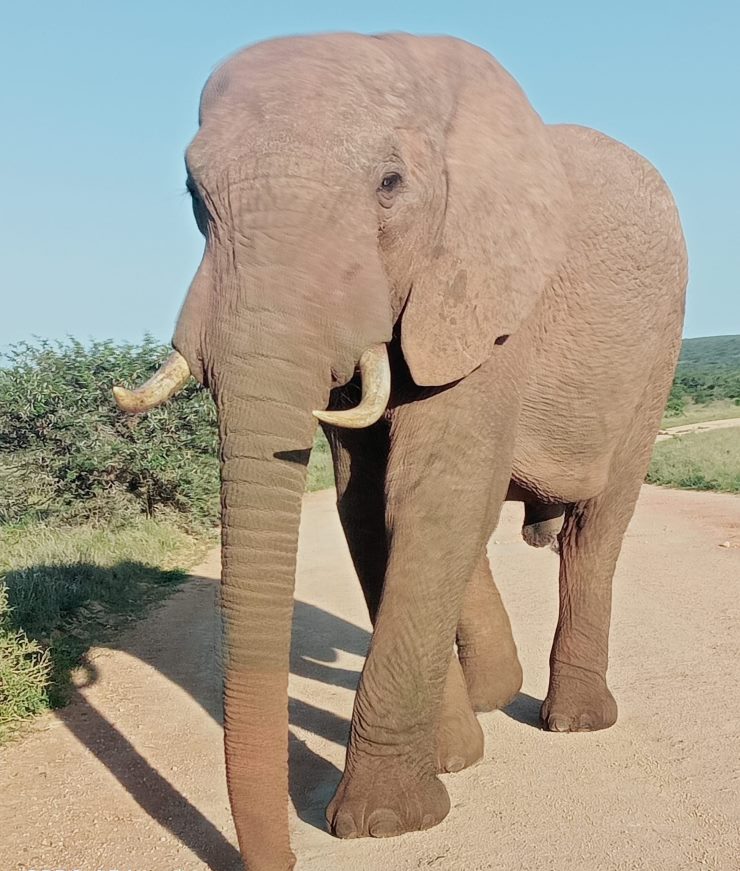
Limpopo Province
- Private game reserves and conservancies in regions like the Waterberg Biosphere Reserve and Madikwe Game Reserve employ hunting as a method to manage elephant populations, thereby preventing ecological harm and fostering a balanced ecosystem.
- The Limpopo province boasts a diverse landscape that includes rugged hills, rocky outcrops, and extensive bushveld. This varied terrain necessitates hunters to be adaptable as they traverse different environments while tracking elephants.
- During specific seasons, the bushveld in Limpopo becomes dense and thick, significantly reducing visibility. This dense vegetation poses challenges for hunters in spotting elephants from afar, highlighting the critical role of skilled guides and trackers who possess deep knowledge of local conditions. These professionals are essential for ensuring effective and ethical game hunting practices in Limpopo’s diverse wilderness areas.
Northern Cape
- The Northern Cape’s landscape is dominated by vast arid and semi-arid regions, such as the Kalahari sand, veld, and scrubland. These environments are known for their harsh conditions, with extreme temperatures and rugged terrain posing challenges for hunters tracking elephants.
- Vegetation in this region is sparse, mainly comprising drought-resistant plants adapted to arid climates. This lack of cover makes it challenging to approach elephants discreetly, demanding hunters to carefully strategize their movements and positions during their elephant hunting safaris.
- Elephants in the Northern Cape have adapted to thrive in these arid conditions, often moving over large distances in search of food and water. This means hunters may need to cover extensive areas and spend considerable time tracking elephants across remote and expansive landscapes.
- Given the remote nature of these hunting grounds, meticulous logistical planning is essential. Hunters must arrange suitable accommodations, transportation, and support services to operate effectively in these rugged and isolated environments, ensuring they can sustain their efforts over potentially extended periods.
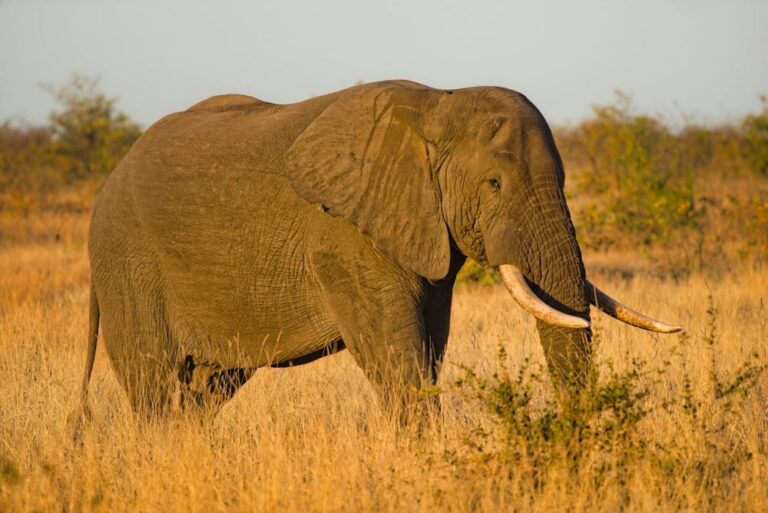
Selecting the Correct Equipment For Your Elephant Hunt
What is in your bag? This might be one of the most crucial answers to ensure ethical and effective elephant hunting.
To help, I have added some key considerations:
Selecting the appropriate equipment is essential for executing ethical and effective elephant hunting in South Africa. The gear you choose plays a critical role in ensuring that the hunting safari is conducted humanely and successfully.
High-Caliber Rifles
Using a high-caliber rifle is crucial for achieving a swift and humane kill. These rifles provide the necessary power to bring down an elephant quickly and with minimal suffering. Hunters should opt for rifles that can penetrate thick skin and bone effectively to ensure a lethal shot.
-
- Recommended Caliber’s: Options such as .375 H&H Magnum, .416 Rigby, .458 Winchester Magnum, or larger calibers like .470 Nitro Express or .500 Nitro Express are preferred for their stopping power and ability to penetrate tough hides and bones.
- Action Type: Bolt-action rifles are favored for their reliability and accuracy, especially over long distances.
- Safety and Accuracy: It is essential to ensure the rifle is properly sighted, and that the hunter has the necessary experience and training to use it safely and effectively.
When elephant hunting in South Africa, optics play a crucial role in helping hunters accurately spot and target their prey from a distance.
Binoculars
These are indispensable for scanning the terrain and identifying elephants before moving in for a shot. Similarly, scopes mounted on rifles enhance precision by providing a clear view of the target and aiding shooters in aiming accurately. If you don’t already have this in your bag, please consider this an essential item for your hunting safari.
- Comfort and Usability: Choose binoculars that feel comfortable in your hands and provide adjustable eyecups, particularly if you wear glasses.
- Explore reputable brands known for their quality optics suitable for hunting elephants, such as Swarovski Optik, Leica, Zeiss, Nikon, and Vortex. Testing different models can help you find the best pair that meets your needs for clarity, comfort, and durability in challenging game hunting environments.
Additional Equipment Considerations
Ammunition: Hunters should always choose ammunition specifically designed for large game hunting, ensuring sufficient stopping power and penetration.
- Bullet Type: For large game like elephants, solid bullets are typically preferred over expanding (soft point) bullets. Solid bullets penetrate deeply and reliably, breaking bones and delivering enough energy to ensure a humane kill.
- Weight and Construction: Choose bullets with appropriate weight and construction for the Caliber and expected range. For instance, for a .375 H&H Magnum, 300-grain to 350-grain solid bullets are common, while larger Caliber’s like .458 Winchester Magnum might use 450-grain to 500-grain bullets.
- Brand and Quality: Select reputable ammunition brands known for their quality and consistency. Brands like Nosler, Barnes, Swift, Hornady, and Woodleigh are often recommended for big game hunting.
Clothing and Gear: Suitable camouflage clothing and sturdy footwear are essential for blending into the environment and navigating challenging terrain. Do not forget your sunscreen as the African sun can be brutal, even on a cloudy day.
Safety Gear: Items like hearing protection and protective eyewear are crucial for safety during shooting.
Responsibilities After the Hunt
Following the hunt, there are important responsibilities that extend beyond the moment of taking down this dangerous game hunting trophy.
- Proper Carcass Utilization: It is essential to handle the elephant carcass responsibly:
- Meat Distribution: Ensuring that the meat is distributed to local communities or donated to wildlife centers minimizes waste and provides sustenance.
- Research and Education: Utilizing parts of the carcass, such as bones and organs, for research or educational purposes contributes to wildlife conservation and knowledge advancement.
- Compliance with Reporting and Documentation: Hunters must comply with all reporting and documentation requirements mandated by local and international regulations. This includes documenting the hunt, reporting the harvest, and ensuring all necessary permits and licenses are valid.
- Respect for Wildlife and Conservation: Ethical hunters understand their role in conservation efforts. By responsibly utilizing the elephant and adhering to legal requirements, hunters support sustainable wildlife management practices.
- Engagement with Communities: Establishing connections with local communities and stakeholders is crucial. This promotes awareness of conservation benefits and demonstrates the positive impact of responsible hunting practices on both wildlife and communities.
By fulfilling these responsibilities conscientiously, hunters uphold ethical standards and contribute to broader wildlife conservation objectives.
Techniques for Tracking and Hunting Elephants
Understanding Elephant Behaviour
- Understanding elephant behavior is essential for successful hunting. Elephants are highly intelligent and social creatures, often moving in herds and maintaining intricate social structures. They possess exceptional memory capabilities, recalling locations of water sources and feeding grounds.
Tracking Techniques
- Tracking while elephant hunting in South Africa demands patience and expertise. Hunters typically look for indicators such as footprints, dung, and disturbed vegetation. Elephants frequently use established trails, making it advantageous to identify these pathways. Wind direction is critical, as elephants rely on their acute sense of smell.
Approaching Stealthily
- Approaching elephants requires meticulous planning and caution. Hunters must advance slowly and silently, utilizing natural cover to remain unseen. Maintaining a safe distance is crucial, as elephants can display unpredictable behaviors and may pose a threat if they feel endangered.
Shot Placement Strategy
- Proper shot placement is vital for ensuring a swift and humane kill. The optimal target is the heart-lung area, situated behind the elephant’s shoulder. A well-placed shot in this region can quickly incapacitate the animal. Headshots are generally discouraged due to their requirement for precise accuracy and the potential for causing prolonged suffering if not executed perfectly.
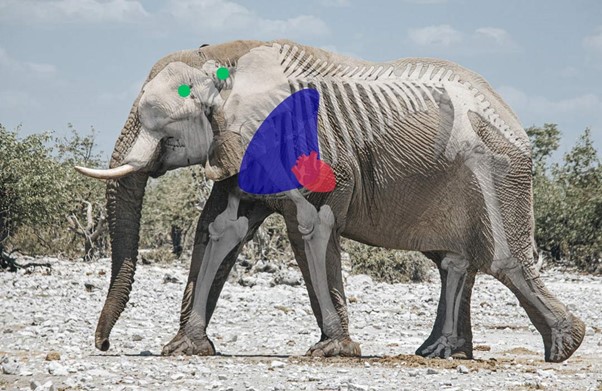
Interesting facts about Elephant Tusks and Trophies found in South Africa
- Iconic Symbol: Tusk trophies, particularly from elephants, have been revered as iconic symbols of strength and wisdom in African cultures for centuries. They often represent leadership and resilience.
- Historical Significance: South Africa has a rich history of Elephant trophy hunting, dating back to colonial times when dangerous game hunting was a popular sport among European settlers. Tusk trophies became prized possessions and symbols of hunting prowess.
- Conservation Impact: The regulation of trophy hunting in South Africa has evolved significantly over the years. Today, it plays a role in conservation efforts by funding wildlife management and anti-poaching initiatives in some areas.
- Economic Contribution: Trophy hunting, including for tusks, contributes to South Africa’s economy through tourism and hunting fees. Revenue generated supports local communities and conservation projects, helping to protect habitats and wildlife populations.
- Controversy and Debate: The practice of trophy elephant hunts, especially for tusks, remains controversial. While proponents argue it can support conservation and local livelihoods, opponents raise ethical concerns about the treatment of animals and the sustainability of hunting practices.
- Cultural and Artistic Value: Beyond their practical use as trophies, tusks are also valued in African art and craftsmanship. They are used in traditional carvings, jewelry, and sculptures, reflecting cultural heritage and artistic expression.
- Legal and Regulatory Framework: South Africa has established strict regulations and quotas for trophy elephant hunts to ensure sustainability and ethical practices. Permits are required, and hunting is managed to prevent overexploitation and maintain healthy wildlife populations.
- Research and Education: Tusks obtained through legal dangerous game hunting safaris can also contribute to scientific research. They provide valuable insights into elephant genetics, age determination, and environmental impacts, aiding conservation efforts and wildlife management strategies.
These facts highlight the complex interplay between cultural traditions, economic considerations, conservation efforts, and ethical debates surrounding tusk trophies in South Africa.
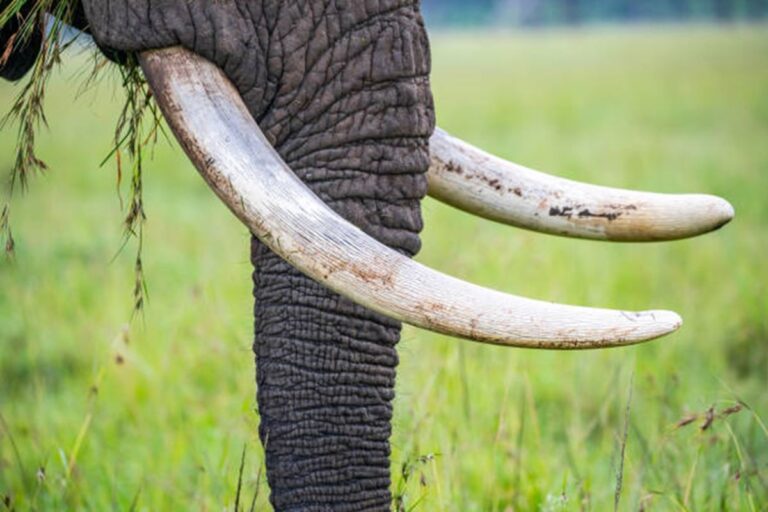
When is the Best Time for Elephant Hunts?
The best time for elephant hunting in South Africa is determined by ethical guidelines, legal regulations, and conservation considerations.
- Seasonal Regulations: Adherence to regulated hunting seasons specified by local authorities ensures sustainable practices and minimizes disruption to elephant populations.
- Weather Conditions: The dry winter months, typically from May to September, are favored for elephant hunting due to sparse vegetation and cooler temperatures, facilitating easier tracking and movement.
- Understanding Elephant Behavior: Knowledge of elephant behavior is crucial, as they are most active during cooler times of day like early mornings and late afternoons, offering optimal visibility and hunting opportunities.
- Conservation Ethics: It is important to avoid hunting during breeding seasons or when elephants are nurturing their young, respecting natural behaviors, and maintaining population health.
Following these guidelines enables hunters to engage responsibly in elephant hunting in South Africa, supporting sustainable conservation efforts while enjoying the challenges of the hunt.
Frequently Asked Questions
Is elephant hunting legal in South Africa?
Yes, elephant hunting is legal, but some strict rules and requirements need to be met when elephant hunting in South Africa.
Why are elephant tusks so valuable?
Elephants make use of their tusks for a variety of reasons, including preotection, foraging, defending themselves and Elephant tusks are made of ivory, that is extremely valuable and sought-after. These beautiful tusks make elephants a target for poachers.
Are elephants still killed for their tusks?
Yes, unfortunately, thousands of elephants are targeted each year and become the victims of poachers who kill them for their ivory tusks.
Can elephants swim?
Yes, elephants can swim and during hot periods can be seen in the rivers wading and swimming.
How clever are elephants?
Elephants are, in fact, extremely clever. They have the largest brains of any land animal and have demonstrated their intelligence as they remember where to go searching for water holes or sources they have used previously, amongst others.
Elephant Hunting in Africa
If you enjoyed discovering more about elephant hunts in South Africa, find out more about Elephant Hunting in Africa: Regulations and Requirements.
Author: R. du Toit
